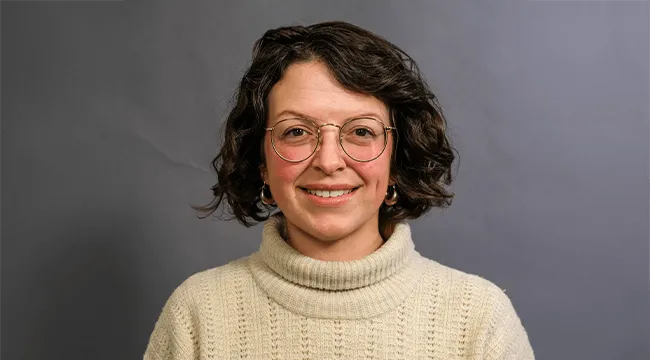Larner Assistant Professor of Neurological Sciences Estelle Spear Bishop, Ph.D.’17, is a co-author on a study recently published in the journal Nature titled “High-density soft bioelectronic fibres for multimodal sensing and stimulation.” Dr. Bishop engaged in the research during postdoctoral work at the Stanford University School of Medicine prior to joining UVM in 2022; her studies were completed in part using software custom written by Grant Hennig, Ph.D., assistant professor of pharmacology at the University of Vermont.
Against a backdrop of an increasing demand for multimodal sensing and stimulation bioelectronic fibers for both research and clinical applications in diverse tissue types, the research team developed soft bioelectronic fibers that do not exhibit the limitations—such as high rigidity and limited functionality—of one-dimensional fiber devices. In this study, a “spiral transformation” technique was used to convert two-dimensional thin films into one-dimensional soft fibers, termed Spiral-NeuroString (S-NeuroString). This approach allows for the fabrication of high-density multimodal bioelectronic fibers, with unprecedented softness compared to existing electronic fibers and microelectrode arrays. Further, the multimodal nature of S-NeuroString enables them to be simultaneously fitted with stimulation electrodes, mechanical pressure sensors, and electrochemical sensors for detection of metabolites.
Overcoming limitations of traditional devices is pertinent for use in dynamic or soft tissues, such as the gastrointestinal tract and the brain. In the brain, S-NeuroString was used to record activity of individual neurons and population level activity in the hippocampus. In gastrointestinal tissues, the team demonstrated simultaneous tissue stimulation, motility monitoring, and serotonin detection. These thin and pliable fibers were not found to significantly disturb intestinal motility patterns or tissue architecture of the brain or intestine compared to traditional rigid implantable devices.
For clinical implications, Bishop says, “This technology could be used to monitor disease states of various organs and to stimulate the nervous system or smooth muscle to account for decreased activity; for example, implantation in the brain of people with neurodegenerative disease, such as Parkinson’s, or implantation in the stomach or intestine of individuals with gastroparesis or inflammatory bowel disease.”
Taken together, these soft bioelectronic fibers offer a powerful platform for minimally invasive implantable electronics, where diverse sensing and stimulation functionalities can be effectively integrated.
